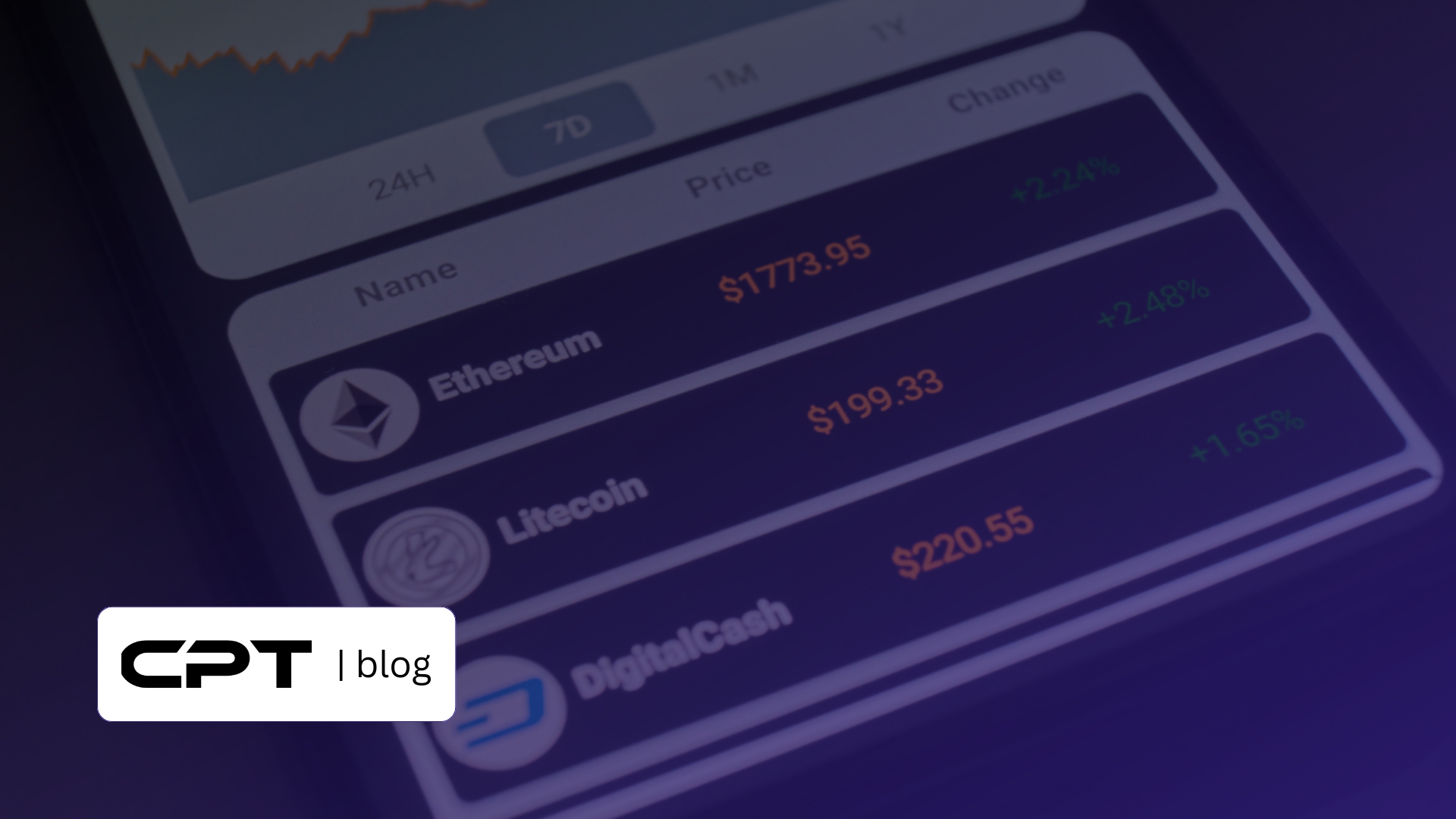
How to Invest in Crypto With Little Money: The Smart Way
Many people think you need a lot of money to start investing in crypto, but that’s far from the truth. The reality is, even a small amount like $100 is enough to begin your journey. In fact, learning how to invest in crypto with limited funds can be one of the smartest ways for beginners to understand the market, manage risk, and build confidence.
Starting small offers distinct advantages. You’ll gain valuable experience navigating exchanges, understanding market volatility, and making investment decisions – all while keeping potential losses manageable. Moreover, unlike traditional stocks, you don’t need to buy a whole coin as cryptocurrencies can be purchased in fractional amounts.
In this comprehensive guide, we’ll explore traditional methods for investing with limited capital and essential risk management strategies. We will also introduce a game-changing alternative that most other guides completely ignore: crypto prop trading. Whether you’re looking to start with just $100 or want to leverage your skills to access much larger trading capital, you’ll find practical, step-by-step instructions for your crypto journey.
Is It Even Worth Investing in Crypto With a Small Amount?
Many novice investors wonder if putting just a small amount into cryptocurrency is worth the effort. The answer is a resounding yes. Starting small is actually one of the smartest approaches to crypto investing.
Why $100 Is More than Enough to Start
Most crypto exchanges like Binance and Kraken have minimum purchase requirements as low as $5 or $10. This accessibility makes crypto investment possible for almost anyone, regardless of financial situation.
Financial experts consistently recommend limiting your crypto exposure to a small percentage of your overall portfolio – typically just 1-2% for beginners and no more than 5% total. Starting with $100 aligns perfectly with this prudent approach.
As Ryan Greiser, a certified financial planner, notes:
“Your first $100 in crypto is about learning the space, not getting rich quick”.
This initial investment serves as your educational foundation rather than a path to immediate wealth.
Learning with Low Risk
If you’re new to the world of crypto or finance in general, starting small has its own powerful advantages. Consider it tuition for your crypto education, where mistakes become valuable lessons rather than financial disasters.
Breaking your investment into smaller portions (like four $25 weekly purchases) offers protection from bad timing while building good investing habits. This approach, called Dollar-Cost Averaging (DCA), helps mitigate the effects of crypto’s notorious volatility. We’ll explore this in more detail as we move through the article.
First-time investors often make emotional decisions during market swings. With a small stake, you’ll learn to navigate these psychological challenges without risking significant capital.
Focus on Percentage Gains, Not Dollar Amounts
The crypto market’s potential for high percentage returns makes even small investments worth considering. For example, if you had invested $100 in Bitcoin just one year ago, it would have grown to approximately $181.25, reflecting an 81.25% increase. Looking back two years, that same $100 investment would be worth around $400, delivering a solid 300% return.
Here’s a simplified breakdown of the same:
| Timeframe | Initial Investment | Value Today | Percentage Increase |
| 2024 | $100 | $181.25 | 81.25% |
| 2023 | $100 | $400.00 | 300.00% |
These kinds of percentage gains far exceed what traditional investments typically offer and are impressive regardless of whether you’re investing $100 or $100,000.
The power of asymmetric returns
Crypto markets offer what’s called asymmetric returns, where your potential gains can be much larger than the amount you risk. Studies of millions of data points confirm this pattern in both Bitcoin and Ethereum.
This effect becomes even stronger when the market is more volatile. For everyday investors, this means that even a small investment could lead to surprisingly high returns, even without putting a lot of money on the line. However, one should always maintain realistic expectations. The crypto market experiences dramatic ups and downs, with Bitcoin historically recording annual losses between 55-73% and gains exceeding 300%.
The smartest approach? Start small, learn continuously, and only invest what you can afford to lose. Your initial $100 investment might not make you wealthy overnight, yet it provides something equally valuable – practical experience in a potentially lucrative market with manageable risk.
3 Traditional Ways to Invest in Crypto With Little Money (Your Own Capital)
Now that we’ve established the value of starting small, let’s explore three proven methods to begin your crypto journey with minimal capital. Each approach offers unique advantages for different investor types.
Method 1: Dollar-Cost Averaging (DCA)
Dollar-cost averaging involves investing fixed amounts at regular intervals, regardless of market conditions. This strategy has emerged as the top investment approach among crypto investors, with nearly 60% identifying it as their primary method.
The concept is straightforward: instead of trying to time the market with one large purchase, you spread your investment across multiple smaller buys. As financial advisor Ryan Greiser recommends: “Break your investment into four $25 weekly buys rather than one lump sum. This protects you from bad timing and builds good investing habits”.
Read more: Dollar Cost Averaging
DCA works exceptionally well for volatile assets like cryptocurrency because you automatically buy more when prices drop and less when they rise. Subsequently, your average purchase price often ends up lower than with a single lump-sum investment.
Practical Walkthrough: Setting up a $25 recurring buy
Setting up a recurring purchase is simple on most major exchanges:
- Create and verify your account on a platform like Coinbase or Crypto.com
- Navigate to the recurring/DCA buy section (often found in the trading menu)
- Select your preferred cryptocurrency
- Enter your recurring amount ($25 in this example)
- Choose your frequency (weekly is ideal for beginners)
- Select your payment method
- Confirm your recurring buy
Most platforms require a minimum purchase of $10-15, and you’ll typically have options for daily, weekly, bi-weekly, or monthly purchases.
Method 2: Buying Fractional Shares on an Exchange
Contrary to popular belief, you don’t need to purchase entire coins. For instance, Bitcoin is divisible up to eight decimal places, meaning you can buy as little as 0.00000001 BTC (called a “satoshi”).
This fractional approach makes investing accessible to everyone. For perspective, if you invested $50 in Bitcoin at current prices (~$116K), you’d own approximately 0.00043 BTC. Various exchanges offer different minimums, some as low as $5.
Practical Walkthrough: One-time $100 purchase on Coinbase
- Create an account on Coinbase
- Complete identity verification
- Link your bank account, debit card, or another supported payment method
- Select “Buy/Sell” from the main menu
- Choose your cryptocurrency (Bitcoin or Ethereum recommended for beginners)
- Enter $100 as your purchase amount
- Review the transaction details (including fees)
- Complete your purchase
The process typically takes less than 10 minutes from start to finish.
Method 3: Earning Crypto (Staking, Learn to Earn & Airdrop)
A third approach is to earn cryptocurrency rather than buying it directly.
Learn and Earn
Crypto programs like “Learn & Earn” offer a no-risk entry point. These educational initiatives reward you with free cryptocurrency for learning about different blockchain projects. Major exchanges, such as Binance, regularly run these programs under their Academy section across various projects. This gives you the opportunity to earn multiple different coins.
Airdrops
Not just that. You can also explore ongoing crypto airdrops. These are free tokens distributed by projects, often in exchange for promoting them or completing simple social media tasks. However, it’s important to vet each project carefully, as not all airdrops are legitimate or worth your time.
Staking
Staking involves putting your existing crypto to work by helping validate transactions on a blockchain. Simply put, it lets you earn additional tokens just by holding certain cryptocurrencies. On Coinbase, eligible users can stake assets like Ethereum and earn up to 6% APY.
Practical Walkthrough: Earning Crypto from Coinbase Learn
- Sign up for a Coinbase account
- Navigate to the “Learn and Earn” section
- Browse available educational content about different cryptocurrencies
- Watch short videos explaining how specific cryptocurrencies work
- Complete quizzes about what you’ve learned
- Receive free crypto for correct answers
According to some sources, new users can earn up to $200 in rewards through Coinbase’s educational programs. These earnings can then become your initial investment capital.
Each method has distinct advantages depending on your goals. DCA suits long-term investors seeking to minimize volatility, fractional purchases work well for targeted investments, airdrops are quite literary ‘free money’, and earning programs provide a risk-free introduction to the crypto ecosystem.
Managing Risk: How to Protect Your Small Investment
Protecting your crypto investment is just as crucial as choosing what to buy. Even small investments deserve proper security measures to ensure they grow safely over time.
Only invest what you can afford to lose
First and foremost, never put more money into cryptocurrency than you’re prepared to lose. The crypto market remains highly volatile and largely unregulated. Many investors make the critical mistake of overcommitting financially, which can lead to severe financial struggles if the market turns against them.
Avoiding hype and FOMO traps
FOMO (Fear Of Missing Out) drives many investors to buy assets at peak prices, resulting in significant losses. This emotional trading clouds judgment, leading to overtrading and accumulating unnecessary fees.
To combat FOMO, consider these strategies:
- Wait 24 hours before acting on a “hot tip”
- Focus on your original investment plan
- Remember that most hyped projects eventually crash
- Study previous market cycles to recognize patterns
Why self-custody matters (and when to get a hardware wallet)
“Not your keys, not your coins” is a fundamental principle in cryptocurrency. Self-custody empowers you with complete control over your assets, protecting them from exchange vulnerabilities or mismanagement.
For investments under $500, exchange wallets with strong security are generally acceptable. However, as your portfolio grows, consider investing in a hardware wallet – a physical device that stores your private keys offline. Even for modest holdings, hardware wallets provide peace of mind and protection against exchange failures.
Using 2FA and secure passwords
Two-Factor Authentication (2FA) creates an additional security layer beyond your password, significantly reducing unauthorized access risk. Most crypto platforms offer 2FA through authenticator apps like Google Authenticator or Authy. Always prefer these over SMS-based verification, which is vulnerable to SIM swapping attacks.
How to spot scams and phishing attempts
Essentially, if an investment opportunity sounds too good to be true, it almost certainly is. Scammers frequently promise guaranteed returns or risk-free earnings. Consequently, avoid anyone offering to “help” invest your cryptocurrency, especially if they claim high or guaranteed profits.
With these fundamentals in place, your small investment stands a much better chance of growing safely as you navigate the crypto landscape.
The Game-Changer: Crypto Prop Firms Over Self-Funding
What if you could trade substantial amounts of cryptocurrency without risking your own money? This approach exists and remains overlooked by most beginner investors.
What is a crypto prop trading firm?
Crypto proprietary trading firms (prop firms) provide traders with capital to trade cryptocurrencies after proving their skills. Unlike traditional investing, where you risk your own funds, these firms supply the trading capital while sharing profits with you. Primarily, they operate by evaluating your trading abilities first, then funding successful candidates with real money.
How to trade with a funded crypto account
Initially, you sign up and pay an evaluation fee to attempt a trading challenge. During this assessment, you must demonstrate proficiency by reaching specific profit targets (around 10%) without exceeding risk parameters like maximum daily losses.
The process typically follows these steps:
- Complete a trading challenge on a demo account following specific rules
- Reach the profit target without violating risk management guidelines
- Receive a funded account with real capital to trade in live markets
Notably, many firms don’t impose time limits on these evaluations, allowing you to trade at your own pace.
Why is this the smartest way to scale with little capital
Above all, prop trading offers access to significantly larger capital than most beginners could personally afford. Successful candidates can start with up to $200,000 in trading capital on day one, potentially scaling to $1 million over time.
Profit splits are highly favorable as traders typically keep 70-90% of profits generated. For example, making $5,000 in monthly profits could result in keeping $3,500-$4,500, which is considerably more than possible with a small personal account.
Meanwhile, the firm absorbs any losses (within predefined limits), so your risk is limited to the evaluation fee rather than losing trading capital. This creates an asymmetric opportunity where your downside is capped while upside potential remains significant.
How Crypto Prop Trading Works
The inner workings of crypto prop trading reveal why it’s becoming popular among traders looking to maximize returns without substantial personal capital. Let’s break down exactly how this process works and determine if it’s suitable for your situation.
The evaluation process: what to expect
Typically, the evaluation begins with selecting an account size (often ranging from $10,000 to $200,000) and challenge type. Your task is straightforward: demonstrate consistent profitability while adhering to risk parameters. Most firms require reaching a profit target between 8-15% while maintaining maximum drawdown limits of 5-10%.
What happens when you pass
Once successful, you receive a funded account with real capital. Initially, you’ll start with a smaller portion (usually 80% of the challenge size) before scaling to the full amount after proving consistency in the live environment.
Pros: No personal capital at risk, high upside
The primary advantage is obvious: you trade large capital without risking your own money beyond the evaluation fee. A $50,000 funded account could generate monthly profits of thousands of dollars, with you keeping the majority share.
Cons: Evaluation fees, strict rules
On the flip side, passing the evaluation isn’t always easy. Strict trading rules apply, and breaching the maximum loss limits can lead to instant disqualification with no opportunity to try again. It’s designed to test not just your strategy, but also your discipline and emotional control.
Practical Example: Turning $100 into a $25,000 funded account
You could start with just a $100 evaluation fee for access to a $25,000 trading account. If you hit the 10% profit target ($2,500) while staying within the risk limits, you qualify to trade with real capital. With an 80% profit split, earning just 5% in a month ($1,250) would bring you $1,000 in profit. That’s a strong return on a $100 investment.
Check out crypto prop trading strategies designed to help you trade smarter and maximize your returns.

How to Find the Best Crypto Prop Firm
Choosing the right crypto prop trading firm can be overwhelming, especially when every platform claims to offer the best terms. That’s where CryptoPropTrader.com becomes your edge. It’s a powerful comparison tool that brings the top prop trading platforms together in one place.
Whether you’re new to prop trading or looking to switch firms, the platform helps you cut through the noise by comparing key factors like funding models, evaluation rules, fees, profit splits and other important factors.
Instead of spending hours digging through websites or relying on biased YouTube reviews, you get instant access to firm breakdowns, easy-to-understand pros and cons, and transparent challenge requirements – all under one roof. This makes it easier to avoid shady firms and focus on the ones that match your trading style and risk appetite.
CryptoPropTrader is designed to save you time on research and help you make smarter, faster decisions, so you can focus on what really matters: trading profitably.
Conclusion
The crypto investment journey doesn’t require a large bankroll to begin. Starting with as little as $100 actually provides an ideal learning environment with manageable risk while you gain valuable experience. Dollar-cost averaging, purchasing fractional shares, and earning crypto through staking, airdrops or educational programs all offer practical entry points for beginners with limited capital.
Though traditional investment approaches work well, prop trading presents a compelling alternative that most investors overlook. This path allows you to access substantial trading capital without risking your own funds beyond a modest evaluation fee. After demonstrating your trading skills, you could manage accounts worth $25,000 to $200,000 while keeping up to 90% of generated profits.
The choice between starting small with your own money or leveraging your skills through a prop firm depends on your personal goals and trading experience. For beginners, that first $100 investment serves as valuable education in market dynamics. For those with some trading knowledge, prop trading offers significantly greater potential returns.
So, are you ready to trade with up to $200,000 in capital? Compare the best crypto prop trading firms on the market and find your perfect match. Whichever path you choose, remember that crypto is highly volatile, and success only comes from continuous learning, managing risk, and making informed decisions aligned with your goals.
Disclaimer: This article is for informational purposes only and does not constitute financial advice. Cryptocurrency is highly volatile. Please do your own research and invest only what you can afford to lose.



